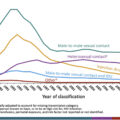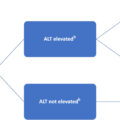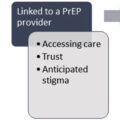Infectious disease (ID) physicians have long treated the common complications of opioid use disorder (OUD) and injection drug use. Such complications encountered in patients with OUD include HIV, viral hepatitis (HBV, HCV), tuberculosis, skin and soft tissue infections (cellulitis, abscesses, necrotizing fasciitis), endovascular infections and complications (infective endocarditis, osteomyelitis, discitis), and internal abscesses (e.g., brain, epidural), among others. ID physicians, however, have not traditionally considered management of OUD as part of their clinical responsibilities. That said, in the context of the evolving opioid crisis and its relationship to managing IDs, it is crucial for ID physicians to better engage in OUD treatment. Treating OUD as ID physicians provides the opportunity to treat the primary medical condition driving these complications, similar to optimizing the immune system with antiretroviral therapy in HIV to prevent and treat opportunistic infections [ ]. Untreated OUD in our patients undermines health outcomes, compromising mortality, ID management, and general physical and mental health [ ]. Initiating evidence-based treatment can stabilize patients, improving their life functioning, health, and well-being. ID physicians who encounter patients during management of endocarditis or in their HIV and HCV clinical practice can use these key opportunities, or “teachable moments,” [ ] to diagnose OUD, initiate treatment (themselves or in strategic partnership with specialty care), maintain, and reevaluate their patients in the long term.
Benefits of opioid use disorder treatment
OUD is a chronic, relapsing condition that, when not managed, contributes to poor outcomes for OUD itself, and for the management of other medical and psychiatric conditions [ ]. Long-term pharmacotherapy (also known as medication-assisted therapies) is the cornerstone of effective treatment for OUD and is superior to behavioral treatment alone [ ]. These evidence-based medications act on mu and kappa opioid receptors to block the euphoric effects of other opioids, while reducing cravings and symptoms of opioid withdrawal [ ]. Evidence-based medications include maintenance with methadone (pure opioid agonist), buprenorphine (partial opioid agonist/partial antagonist), and naltrexone (pure opioid antagonist). Opioid receptor agonists, like methadone and buprenorphine, consistently reduce overdose and related mortality [ ], prevent relapse, improve social functioning, and improve mental and physical health. Initiation of pharmacotherapy by itself after nonfatal overdose is associated with a profound decrease in all-cause and opioid-related mortality [ ]. This includes improved mortality from infective endocarditis [ ], as well as improvements along the entire HIV treatment cascade and in Hepatitis C treatment [ ]. Opioid agonist treatment increases HIV treatment engagement, including engagement in HIV care, initiation onto and adherence with ART retention, and viral suppression, as well as decreases ART drop-out relative to matched patients with HIV not on opioid agonist therapy [ ]. Opioid antagonist treatment with extended-release naltrexone has been shown to reduce relapse [ , ] overdose [ ] and improve HIV viral suppression [ ]. OUD treatment is also a primary prevention of HIV [ , ] and HCV by reducing or eliminating the frequency of injection[ ]. Thus, ID specialists can be more effective when they are able to engage their patients in treatment for OUD.
To treat opioid use disorder successfully, recognize that it is a chronic, relapsing and remitting disease of the brain
OUD is a chronic, relapsing condition that can be successfully managed over a lifetime. Despite effective treatments, however, relapse is common and expected, similar to patients with diabetes with poorly controlled glucose after eating a high caloric meal. Relapse rates for OUD are similar to those of other chronic diseases such as diabetes, hypertension, and asthma, which also require both pharmacologic and behavioral treatment modalities [ ]. Practitioners may perceive that relapse during treatment is a failure, but this is not accurate. Successful treatment requires ongoing evaluation and treatment modification. Similar to diabetes and HIV, relapse indicates the need to adjust, restart, or change treatment. Treatment must keep patients engaged, as multiple episodes of treatment may be needed, and adequate treatment length is critical for good outcomes. A central predictor of retention in treatment using opioid agonist treatment is adequate dosage—most patients are prescribed suboptimal dosages [ , ]. Duration of treatment for this chronic condition can vary; 1 year is considered an absolute minimum for maintenance, but typical duration of treatment is several years, and can even be a lifetime [ ] .
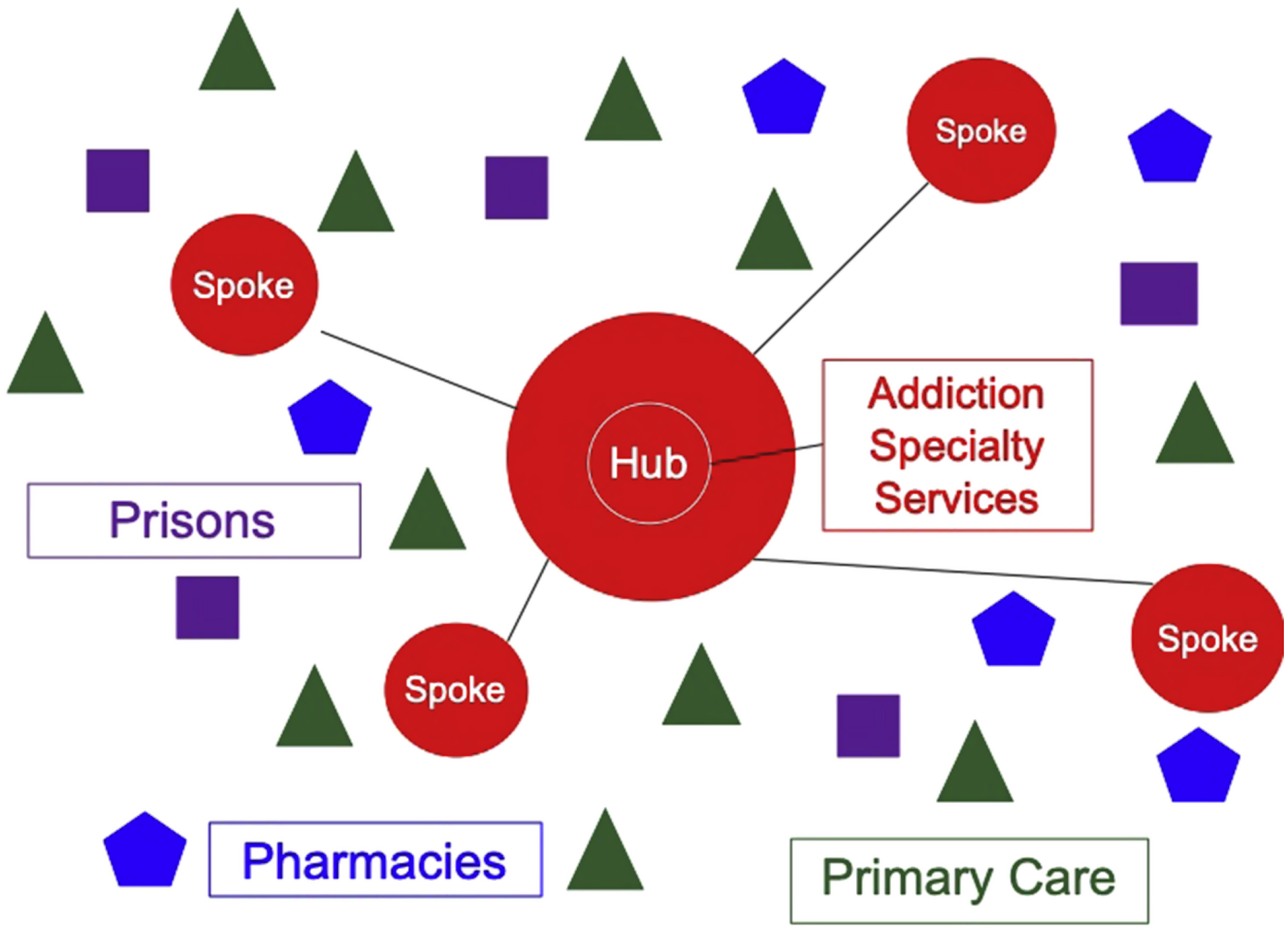
Barriers to opioid use disorder treatment
The current opioid crisis in the United States has unveiled shortcomings in our ability to provide treatment. Despite documented efficacy of pharmacotherapy, only 10% of people with OUD in the United States who are eligible for treatment receive it [ ]. Barriers to treatment are multilevel and include those at the patient, clinician, and structural levels. Patients are often not ready to stop using [ ], have inaccurate beliefs about the availability and effectiveness of pharmacotherapies [ ], have preference for counseling and abstinence-based programs despite evidence favoring medication [ ], experience stigma against both OUD itself and its treatment [ ], and are overly optimistic about their risk of avoiding relapse [ ]. Clinician-level barriers to treatment expansion include perceived time constraints, concerns about diversion, unwillingness to prescribe, not perceiving patient need, and low confidence in their ability to prescribe pharmacotherapy. This may rise from inadequate training and stigma against patients with OUD (see Table 9.1 ) [ , ]. Structural barriers limiting treatment access include shortage of trained providers, reimbursement models that do not adequately compensate for care coordination and psychosocial services, stigma, geographical barriers (extensive travel to treatment in rural areas) [ ], long waitlists for treatment entry [ ], restrictions on the number of patients that can be treated, and lack of Medicaid expansion in some states [ ].
| Barriers | Potential solutions to ease the burden |
|---|---|
| Getting started as an OUD pharmacotherapy provider may be daunting |
|
| Maintaining patients with OUD in long-term pharmacotherapy services may seem challenging |
|
| Complying with legal requirements set forth by DEA | Follow the rules (on DEA and SAMHSA websites), keep detailed records, and be prepared for DEA visit https://www.deadiversion.usdoj.gov/pubs/docs/dwp_buprenorphine.htm |
| Clinic-based programs may be concerned about financial viability or that Medicaid or private insurance reimbursement may be too low for the time required to treat OUD | This can be challenging to address at the practice level rather than policy level, and is common to managing many chronic conditions, but some clinicians can accept cash, private insurance, and a sliding fee scale to ensure accessible treatment. Most State Medicaid programs provide some coverage for buprenorphine treatment. |
| Private and governmental insurance programs may limit or restrict the duration of treatment, or require considerable documentation | This is also an issue that needs attention at the policy level, though it is similar to the increasing paperwork burden required in many aspects of clinical care |
| Concerns for diversion and misuse | There is less diversion of buprenorphine than other opioids, and when it is diverted for street use, it is frequently used for self-treatment to reduce withdrawal symptoms, paradoxically reflecting shortage of medical treatment[ ]. There is also low overdose risk. Most providers have found the benefit of OUD treatment outweighed the risk of diversion. Providers can monitor with random urine drug screens, pill counts, use of the state prescription drug monitoring programs, and local pharmacies |
| Ensuring access to ancillary counseling services | Despite recommendations to provide a minimum of monthly counseling (the specificity in terms of content or duration is not described), a randomized controlled trial of medical management (brief counseling when prescribing) versus regularly cognitive behavioral treatment found no difference in outcomes. Strategies include providing brief counseling during prescription, referring to offsite counseling, or engaging patients in group counseling either within the practice or offsite. Additionally, computer-based or online counseling services (e.g., www.cbt4cbt.com ) [ ] are also available |
| Overcoming stigma or patient mistreatment from other clinicians, medical staff, or pharmacies | Have open and honest dialogues with colleagues and staff. Encourage them to shadow clinicians who are treating OUD, humanize patients, and cultivate relationships with local pharmacies to address problems quickly and directly |
| Justice system administrators (drug court judges, probation officers) may discourage or prohibit use of OUD pharmacotherapy | Patients with OUD have an increased risk for incarceration, and those involved have the highest risk for mortality. Clinicians may be able to serve as impactful advocates for individual patients who would benefit from medications. Establishing aftercare programs in partnership with drug courts, community-based corrections (probation or parole) or jails and prisons can effectively engage patients during this vulnerable time |
| Facilitators | |
| Many clinicians report finding this work highly rewarding and fulfilling, especially in watching patients with OUD drastically improve their lives and seeing the impact on families and communities. | |
| Clinicians feel they are part of a solution in addressing an important public health crisis. | |
Scale-up of opioid use disorder treatment is a critical public health priority: an overview of expansion strategies
OUD can be treated in a number of nonaddiction clinical settings. One of the key challenges in addressing the opioid crisis is ensuring that OUD treatment scale-up in these settings is prioritized and supported. An expansion strategy focusing only on specialty addiction treatment settings will be inadequate to overcome existing barriers to treatment. Instead, increasing treatment access requires a multipronged strategy that includes treatment of OUD in multiple settings, like primary and IDs clinical care, the justice system, emergency departments, during hospitalization, and, eventually, in pharmacies. Expanding access and uptake in treatment is a national public health priority for addressing the opioid crisis [ , ].
Strategies for expanding access can begin with existing opioid treatment centers. Conventionally, specialty treatment centers utilize a high-threshold approach that limits patient access [ ], such as highly selective intake criteria, long waiting lists, no primary care access, high cost of treatment, and exclusion of patients with comorbid conditions. Once in treatment, patients may face punitive discharge policies, lack of treatment individualization, no shared patient decision-making, and other barriers to retention. In contrast, innovative, low-threshold models that have decreased barriers and increase service capacity, as with an open-access system, have been shown to deliver care while preserving patient outcomes without increase in cost [ ].
Access and capacity can be further expanded with nonspecialty sites that conduct intake and monitoring (i.e., clinics, emergency departments, hospitalization, pharmacies, and the justice system). This is exemplified in the Hub and Spoke model [ ]. The hub is the existing opioid treatment specialty center with a board-certified addiction specialist, able to dispense methadone, buprenorphine, and other related treatments. Community and healthcare sites serve as spokes into the hub. Transfers between hubs and spokes are bidirectional. Hubs can do initial intake and evaluate appropriate treatment placement for more stabilized patients. Patients can thus be initiated on buprenorphine within the hub then transferred to primary care provider. Alternatively, patients may be initiated on buprenorphine at clinics, or during the crucial windows of acute crisis (nonfatal overdose, infections in hospitals, or transition from justice system to community). Patients can then be referred to the hub for further evaluation, or reevaluation if they are having inadequate response to treatment. This model is akin to the provision of medical care where a specialty hospital or academic medical center serves as a hub and smaller nearby hospitals and clinics serve as the spokes. This can be further expanded with telemedicine, which uses videoconferencing to conduct remote diagnosis and treatment. Evidence for telemedicine’s effectiveness in mental health is well-established, though it is currently nascent in addiction treatment. Despite advocacy from the President’s Commission on Combating Drug Addiction and Opioid Crisis [ ] and the American Society of Addiction Medicine, several barriers exist to telemedicine expansion [ ]. Even so, its use has increased and may be a promising means by which to overcome barriers to care in areas with low access to providers, such as in rural areas [ ]. Additionally, telemedicine can be used for distance-based learning by providing tele-education to connect primary care providers with specialty care for facilitating case-based learning, as in Project ECHO (Extension for Community Healthcare Outcomes). This can expand access to specialized treatments in underserved areas, including in primary care, justice, and IDs clinical care settings [ ]. Outside the United States, OUD treatment can additionally be provided in pharmacies and overseen by pharmacists, a strategy that has been used successfully in the United Kingdom [ , ] .
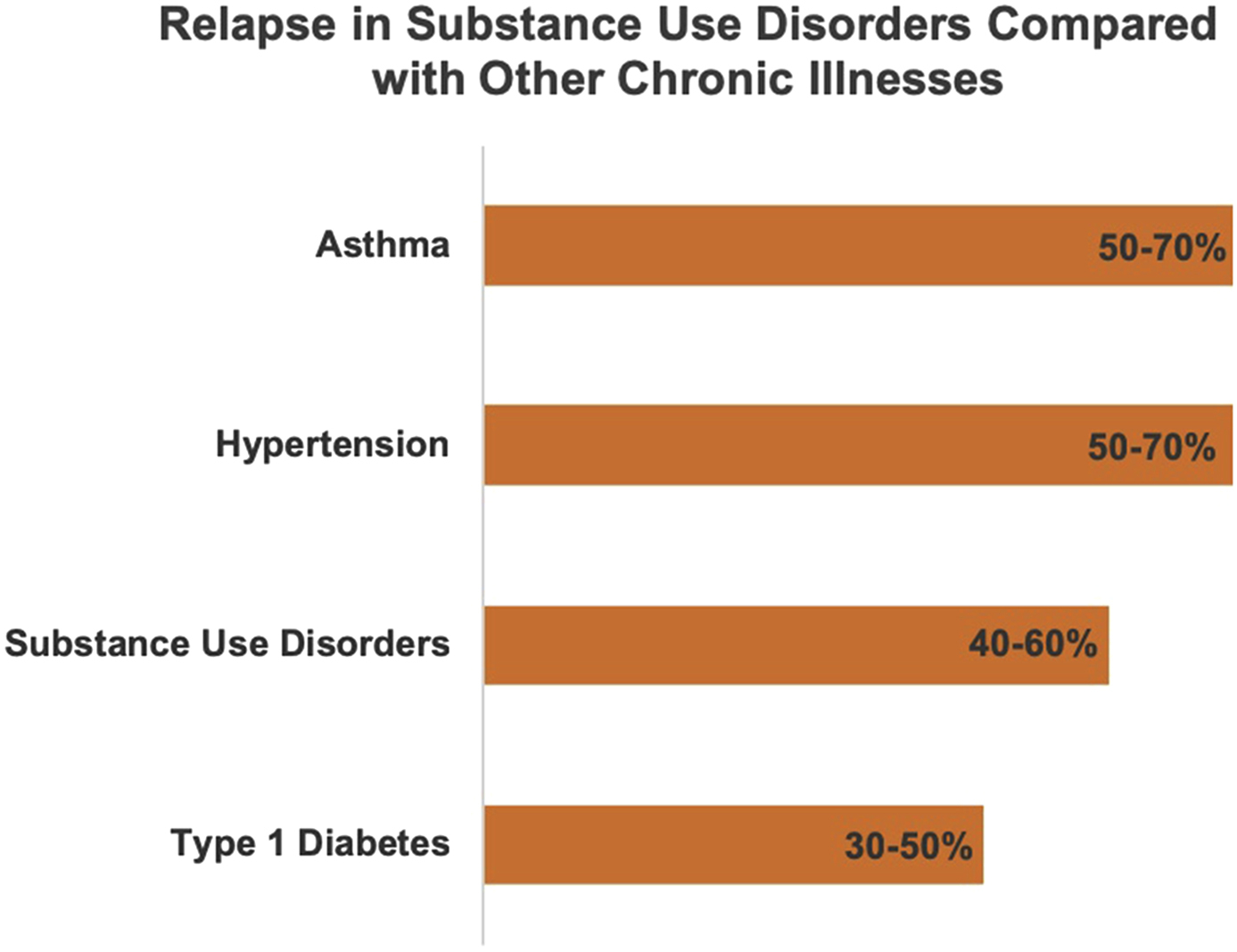
Expansion of opioid use disorder pharmacologic treatment in nonaddiction specialty clinics is a promising public health strategy
Primary care and other specialty ambulatory clinics (e.g., HIV clinical care settings, hepatology practices treating HCV) are a high priority and promising opportunity for treatment expansion [ ] but have been underutilized [ ]. Primary care is deeply essential, as treating OUD without comprehensive medical care is associated with an increased hazard of death [ ]. In addition to being at the frontlines of care (especially for underserved and vulnerable populations), primary and ID physicians are especially expert at managing complex patients with multiple comorbidities requiring coordination of care with specialists [ , ]. The ambulatory clinic is therefore especially well-suited for serving as a medical home for OUD [ ]. International guidelines [ ], including those from the International Association of Physicians in AIDS Care (IAPAC), recommend integration of treatment for OUD as a key priority for optimizing HIV treatment outcomes [ ].
Indeed, HIV providers have long called for integration of services to improve care for their patients [ , ], including for mental health, gynecological, hepatitis C, and other services, in addition to treating addiction. One of the earliest models for integrating OUD into multidisciplinary care was the BHIVES collaborative, which called for introducing buprenorphine into the HIV care setting. This 10-site demonstration project showed not only feasibility but that HIV patients initiated on buprenorphine were significantly more likely to initiate ART and to achieve viral suppression [ ]. Additional models have emerged from the initiative, confirming that buprenorphine treatment could easily be delivered by both HIV and addiction medicine specialists. Such models do require a “glue” person—nurse, counselor, social workers, or other individual who was able to coordinate the activities—for successful implementation [ ]. Several representative models of integrating OUD treatment into HIV clinical care settings have since been identified [ ]. The primary care model posits that the primary clinician be responsible for managing OUD, only referring when patients become too complicated. The onsite addiction specialist places an expert within the clinic (colocation), providing addiction treatment onsite. A hybrid model allows for the addiction expert to induct patients and refer stable patients to all providers. An emerging model showing promise is group visit models, in which providers see many patients at once, which improves symptoms, retention, and provides a unique peer support [ , ]. All models include four central components: pharmacologic therapy, complementary psychosocial services, integration of care, and education and outreach [ ].
Legislative history for expanding access to pharmacotherapy in the ambulatory setting
The Drug Abuse Treatment Act (DATA) of 2000 allowed FDA-approved schedule III-V opioid agonists for OUD treatment to be provided outside of specific federally approved treatment programs. The only opioid agonist meeting these criteria is buprenorphine, which was FDA-approved in 2002. Per DATA 2000, physicians can prescribe buprenorphine in settings other than licensed treatment centers if they complete an 8-hour training and apply to receive a waiver. Any physician is eligible to become a buprenorphine prescriber if they have an active state medical license, is registered with the Drug Enforcement Agency (DEA) to prescribe controlled substances, and is able to provide or refer patients to counseling and support services. The 8-hour training courses are available online, in person, or in combination formats. Popular courses are offered by the American Academy of Addiction Psychiatry, American Society of Addiction Medicine (ASAM), and Substance Abuse and Mental Health Services Administration (SAMHSA). The SAMHSA website also has a short online application for the waiver itself [ ].
In 2016, with the Comprehensive Addiction and Recovery Act (CARA), the patient limit was expanded from 30 patients per practitioner and 100 patients after 1 year to additionally allow qualified waivered physicians to expand to 275 patients. CARA also broadened prescribing privileges to nurse practitioners and physician assistants [ ]. Methadone, in contrast, is schedule II and available in the United States in licensed and accredited specialty treatment programs [ , ]. No waiver is required to administer extended-release naltrexone (XR-NTX), which is not a controlled substance.
Clinician-level barriers to prescribing treatment for opioid use disorder
Physicians reported several barriers in initiating and expanding OUD treatment in their practice [ ]. Barriers such as government regulations, role of the justice system, and reimbursement need to be addressed at the policy and institutional level. At the provider level, clinicians have developed several strategies and facilitators for overcoming barriers to providing OUD treatment in their practice ( Table 9.1 ). Additional resources for nonaddiction specialty clinicians for OUD pharmacotherapy can be found at the SAMHSA-sponsored Provider Clinical Support System ( PCSSnow.org ).
Screening for opioid use disorder, the benefit of treatment initiation, and additional work up
Screening is the first step for identifying patients with OUD who would benefit from treatment. All patients should be screened for problematic substance use. Patients with conditions closely associated with OUD or injection drug use, including chronic pain, HIV, Hepatitis C, and endocarditis, should especially prompt evaluation for OUD. Clinical observations such as signs of withdrawal, intoxication, or needle “track” marks should also prompt screening. “Drug seeking” behaviors such as repeated requests for refills of prescription pain medication or perseveration on need for opioids can be an indicator of OUD, but should be interpreted cautiously, as these signs may also reflect inadequate treatment of chronic pain (or both) [ ]. Multiple screening tools exist ( Table 9.2 ) [ ]. Assessing whether patients are appropriate for pharmacotherapy involves evaluating patient interest and motivation, and ensuring they understand benefits, risks, and process (see Shared Decision-Making below).
| Tool | No. of questions | Population | Sensitivity | Specificity |
|---|---|---|---|---|
| CAGE-AID | 4 | Any substance use problem: 70% | Any substance use problem: 85% | |
| DAST-10 | 10 | Discriminates current and former users | Any substance use problem: 80% Substance use disorder: 85% | Any substance use problem: 88% Substance use disorder: 78% |
| CRAFFT | 5 | Useful for adolescents | Any substance use problem: 76% Any substance use disorder: 80% Drug dependence: 92% | Any substance use problem: 94% Any substance use disorder: 86% Drug dependence: 80% |
| SSAQ [ ] | 1 | Substance use disorder: 100% Current substance use: 80% | Substance use disorder: 74% Current substance use: 94% | |
| ASSIST [ ] | 8 | Substance use disorder: 95%–100% | Substance use disorder: 79%–93% | |
| SAMISS [ ] | 16 | Patients with HIV | Substance use disorder: 86% | Substance use disorder: 75% |
Although SAMSHA supports the use of SBIRT (screening, brief intervention, and referral to treatment) [ ] for substance use disorders, the single most important clinical step in caring for patients with OUD is initiating medication, as pharmacotherapy is stabilizing and initiation is associated with improved mortality [ , ]. A systematic review of SBIRT effectiveness in substance use disorders suggested this strategy is only effective in alcohol use disorder [ ]. However, this study mostly included substances without available pharmacotherapy (e.g., cannabis, stimulants). In contrast, OUD does have effective medications available that can be initiated immediately after screening, without requiring specialty referral. These medications provide the opportunity to screen and treat , since nonmedication interventions with referrals to outside treatment have been found to be ineffective—the minute the patient leaves a comfortable clinical care setting, they are unlikely to follow-through due to problematic drug use and stigma, e.g., concerns for meeting unfamiliar clinicians and encountering discrimination. Furthermore, patients often encounter waiting lists, one of the leading barriers to specialty care for OUD. Being on such a waiting list and not receiving treatment is associated with a 10-fold higher mortality relative to patients who were admitted immediately to care [ , ]. When on waiting lists, patients often experience symptoms of opioid withdrawal, chaotic opioid (and other drug) use, and resultant death. Thus, identifying and expeditiously initiating treatment and connecting patients to care is critical.
The evaluation of OUD includes screening for important and common cooccurring conditions, such as infections, mental health status and psychiatric disorders, chronic pain, other substance use disorders, and pregnancy. Initiating buprenorphine or XR-NTX can potentially induce opioid withdrawal syndrome, which is contraindicated in pregnancy (women already on buprenorphine can safely continue it). A brief physical exam may include using a validated clinical scale for withdrawal symptoms such as the Clinical Opioid Withdrawal Scale (COWS) [ ]. Evaluation of social and environmental barriers and facilitators to treatment should be completed. Initial lab testing generally includes urine toxicology screening, complete blood count, liver function tests, and serology testing for hepatitis C and HIV, if not already done. Tuberculosis and sexual transmitted infections should also be evaluated if indicated. Women who are able to get pregnant should be tested for such, and interviewed regarding interest in contraception, especially since effective treatment of OUD can result in increase in fertility (see Women with OUD below) [ ].
Available pharmacotherapy options for treating opioid use disorder
There are a number of evidence-based pharmacotherapies for the treatment of OUD, including methadone, buprenorphine (various formulations), and extended-release naltrexone (XR-NTX). A description of the attribute of each treatment strategy is described below and summarized in Table 9.3 .
| Name | Methadone | Sublingual buprenorphine or buprenorphine-naloxone | Implantable buprenorphine | Injectable buprenorphine | Extended-release naltrexone |
|---|---|---|---|---|---|
| Mechanism | Opioid agonist | Partial opioid agonist | Opioid antagonist | ||
| Dosing frequency | Daily | Usually daily | Every 6 months | Monthly, or weekly (approval pending) | Every month |
| Administrative route | Liquid, oral | Tablet or dissolvable tab, sublingual; prescription can be dispensed up to monthly | Implantable rod | Injected intramuscularly or subcutaneously | Injected intramuscularly |
| Induction process | None | 6–48 h of opioid abstinence before first dose | 6–48 days of supervised abstinence, period of stabilizing dose with sublingual buprenorphine | 48 days of supervised abstinence, period of stabilizing dose with sublingual buprenorphine | 7–10 days of supervised opioid withdrawal before injection |
| Location of administration | Only by supervision licensed, addiction specialty treatment centers | Specialty and nonspecialty clinical care settings (e.g., primary care, HIV clinics) by prescription and distributed from pharmacy, taken at home | Specialty and nonspecialty clinical care settings (e.g., primary care, HIV clinics) by monthly injection | ||
| Federal counseling requirements | Minimum once monthly | Required, frequency determined by patient need | No requirements | ||
| Pharmacological drug interactions | CYP3A4 metabolism, many potential interactions reported | Few interactions reported, e.g., saquinavir (QT prolongation) and serotonergic agents (serotonin syndrome) | Very few interactions | ||
Stay updated, free articles. Join our Telegram channel

Full access? Get Clinical Tree





